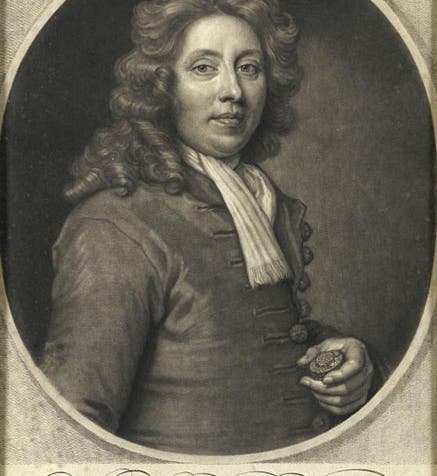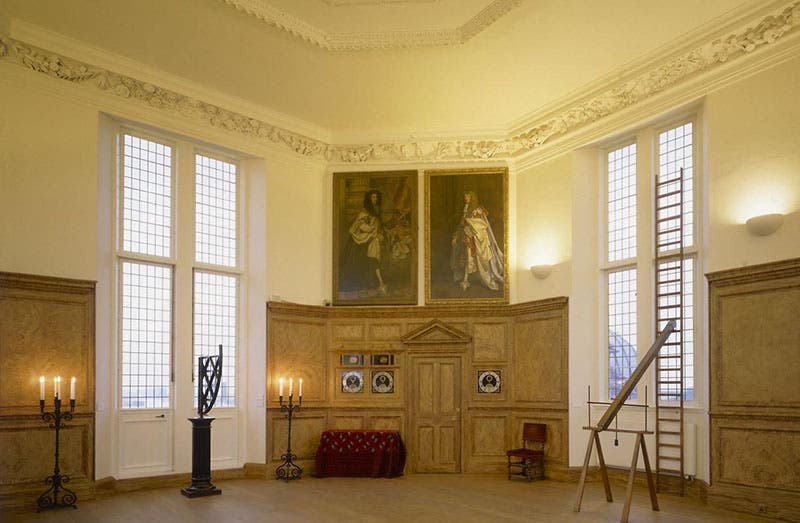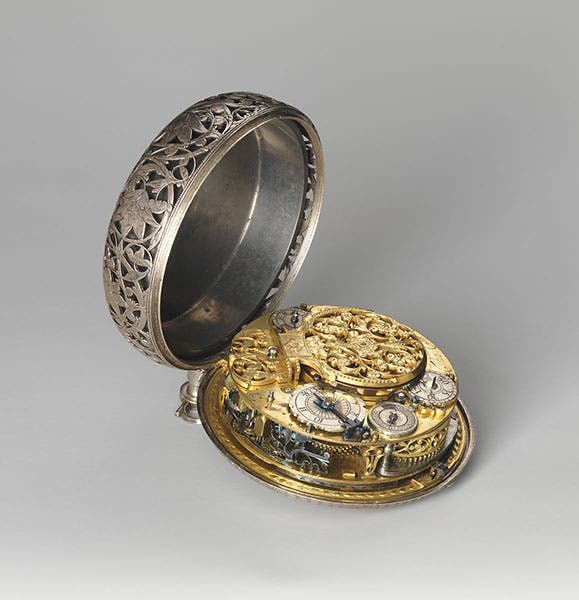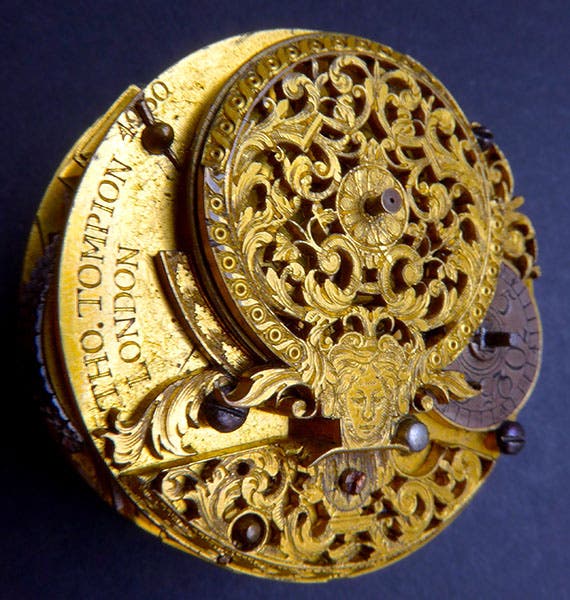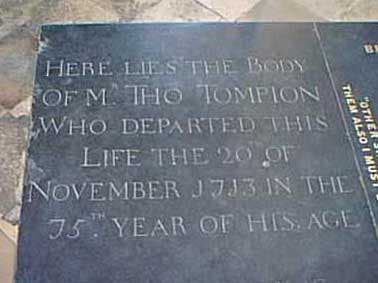Scientist of the Day - Thomas Tompion
Thomas Tompion, an English clock maker, died Nov. 20, 1713, at age 74. Tompion is often referred to as the "father of English clock-making.” He came onto the horological scene in 1675, when he made a watch for Robert Hooke. Christian Huygens had sent a letter to the Royal Society of London in 1675, describing a new kind of watch that he had invented, driven by a coiled spring instead of a pendulum. Robert Hooke, contentious as ever, immediately announced that he had invented the spring watch many years ago, and he commissioned Tompion to make one according to Hooke's design. The watch was crafted and presented to King Charles II with the inscription: "Robert Hooke invent. 1658. T. Tompion fecit, 1675". The watch, it seems, has not survived - what a treasure that would be!
Tompion then reaffirmed his merit by making two pendulum clocks for the Octagon Room at the new Greenwich Observatory. They featured an innovation that Tompion did not invent, but which he was the first to actually build into a clock: the dead-beat escapement. The escapement is the mechanism that connects the pendulum to the clockwork, and in turn drives the pendulum. Earlier escapements had recoiled slightly as they clicked back and forth, affecting the accuracy; the dead-beat escapement had no recoil, was more accurate, and has been used in pendulum clocks right up to the present. In the photo of the Octagon Room, the two clocks appear as the two squares to the left of the doorway - the pendulums are hidden behind the wall (and above the dials).
Tompion was an incredibly prolific clockmaker, producing over 5000 clocks and watches during his career. We see here the mechanism of a Tompion watch, made in 1680, that is in the Metropolitan Museum of Art (third image). Tompion was so productive that many of his creations still come up regularly at auction, where they attract bids of tens of thousands of pounds. In a view inside one these auctioned watches, one can spot another of Tompion’s claims to fame: the serial number (fourth image). This is Tompion watch no. 4230, crafted in 1708, with the number carefully engraved on the inner case. Tompion was the first watch maker, and apparently the first instrument maker of any kind, to assign each of his creations a production number.
There is one surviving portrait of Tompion, a handsome mezzotint after a painting by Godfrey Kneller (first image). Tompion is buried in Westminster Abbey, where he shares a grave with his almost equally famous pupil, George Graham (fifth image). Graham was our Scientist of the Day on July 7, 2016, where you may see, as the last image, a photo of a wall plaque that sits near the site of the Tompion-Graham workshop in London and jointly commemorates both artisans.
Dr. William B. Ashworth, Jr., Consultant for the History of Science, Linda Hall Library and Associate Professor emeritus, Department of History, University of Missouri-Kansas City. Comments or corrections are welcome; please direct to ashworthw@umkc.edu.

